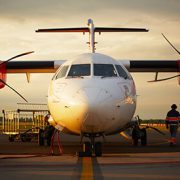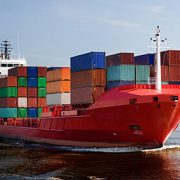What does “rely on class” mean in air transportation?
1. What is relying on class?
As we know, general cargo air freight rates are usually divided into m, N and Q levels, of which Q level is divided into 45, 100, 300, 500, 1000 and other levels – the larger the weight, the cheaper the rate.
Grade dependency means that when the freight of a batch of goods is calculated according to the rates of different weight grades, if the freight calculated by the higher weight is lower than the freight calculated by the “actual” weight, the freight is calculated according to the lowest weight of the higher level and its rate.
2. How to calculate the dependency level?
If 45-10 yuan / kg; 100-9 yuan / kg; 300-8 yuan / kg… I have one ticket of goods, and the actual billing weight is 98 kg.
Then: the freight calculated by the “actual” weight (98kg) and its rate (10 yuan / kg) = 98kgx10 = 980 yuan. Because 98kg is close to 100, try to use “grade” (100kg) and its rate (9 yuan / kg), and the calculated grade freight = 100kg * 9 = 900 yuan.
Obviously, the freight calculated by “level” is 900 yuan, which is lower than the freight calculated by “actual” weight and its rate of 980 yuan – it can be seen that the freight calculated by “level” is cheaper.
Therefore, when the airline allows “grade dependence”, the cargo can be “grade dependence” – only 900 yuan needs to be paid to the airline. If the airline does not allow to rely on the level, there is no way. It can only be charged according to the “actual” weight level and pay the airline 980 yuan.
3. When should I rely on grade?
When the two conditions are met at the same time, it should rely on the level.
First, it is more cost-effective to rely on the level; Second, airlines are allowed to rely on class. Both conditions are indispensable.
First, whether it is cost-effective to rely on the level is known only after calculation and comparison. When the airline allows to rely on the level and the billing weight is close to the higher weight level, it’s best to calculate. In case the level is cheaper, it depends on the level.
Second, not all airlines accept class.





